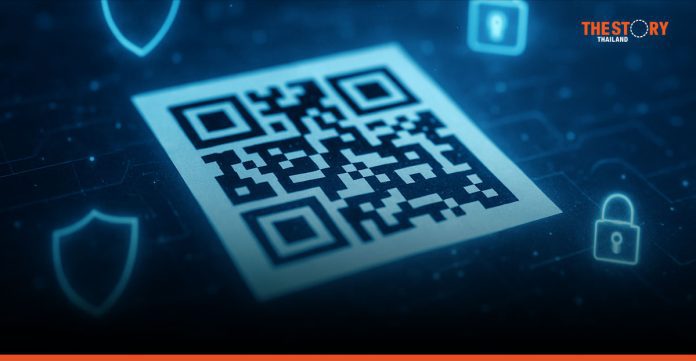The widespread adoption of QR codes in Thailand, which ranks third globally in monthly usage, has created a fertile ground for a new cyber threat known as ‘Quishing’ (QR code phishing). This tactic allows cybercriminals to hide malicious URLs within legitimate-looking QR codes, diverting unsuspecting users to sophisticated phishing websites.
According to Unit 42 researchers at Palo Alto Networks, QR-based attacks are becoming increasingly complex. Attackers are now employing trusted link redirection services to lend credibility to their fake links and are even using tools like Cloudflare Turnstile to bypass automated security scanners while targeting real users. Furthermore, many malicious sites appear tailored to specific victims, indicating that criminals are performing detailed reconnaissance before launching attacks.
Dr.Tatchapol Poshyanonda, Country Director for Indochina at Palo Alto Networks, warned that Thailand’s high smartphone usage and frequent scanning of QR codes in uncontrolled public environments (such as posters and on platforms like LINE) make the threat particularly concerning.
“To counter this evolving threat, awareness must be the first line of defense,” said Dr. Tatchapol. “Organizations should emphasize that QR codes must be treated with the same level of caution as unknown links. Tools like preview functions or URL validation mechanisms can help users verify destinations before proceeding. Meanwhile, Multi-factor authentication (MFA) remains a vital measure to limit the fallout from stolen credentials.”
Mitigation: Essential Tips for Organizations and Consumers
Palo Alto Networks stresses the need for both proactive user education and robust technical defenses:
3 Essential Tips for Organizations to Prevent Quishing:
- Educate Your Team: Provide regular training to staff on QR code safety and how to spot potential scam risks.
- Update Devices: Ensure all employee smartphone operating systems and security applications are consistently kept up to date for maximum protection.
- Leverage Enterprise Security: Deploy expert solutions such as Palo Alto Networks’ Advanced WildFire, URL Filtering, and DNS Security to automatically block threats originating from malicious QR codes.
3 Essential Tips for Consumers to Avoid Quishing:
- Be Cautious with QR Scans: Always treat scanning a QR code with the same suspicion as clicking an untrusted link.
- Verify Before You Proceed: After scanning, carefully check the destination URL. Look out for unexpected redirections or suspicious-looking domains before you enter any information or confirm an action.
- Strengthen Device Security: Keep all devices updated, enable Two-factor authentication (2FA) on all critical accounts, and use trusted mobile security tools.
As QR code usage continues its rapid growth in Thailand, cybercriminals will constantly innovate. The combination of user vigilance and strong technical safeguards is the key to effectively reducing the risks posed by these emerging threats.
Banpu teams up AI and People to lead organization forward
Qualcomm and Green IO to forge AI Ecosystem for Thai developers





